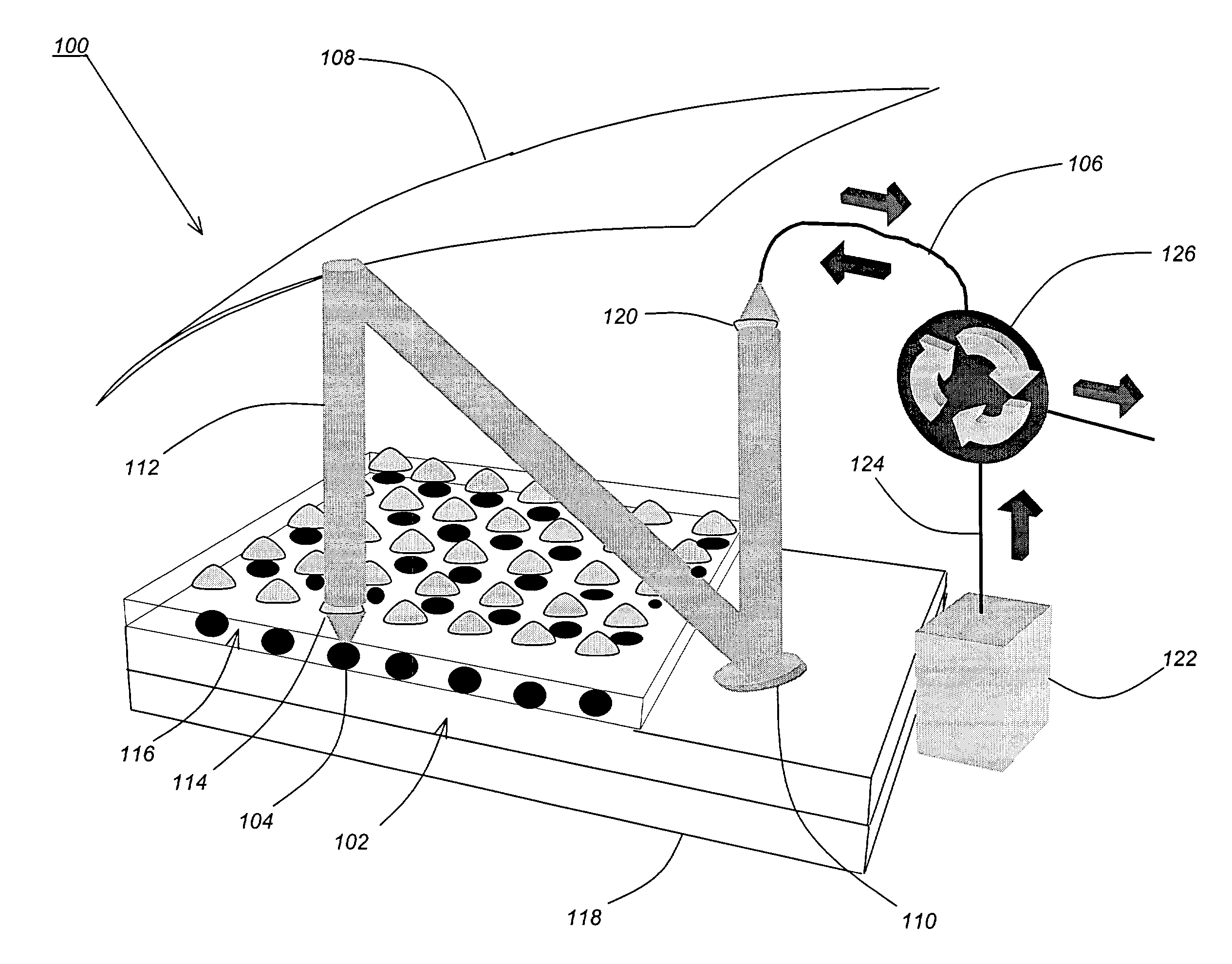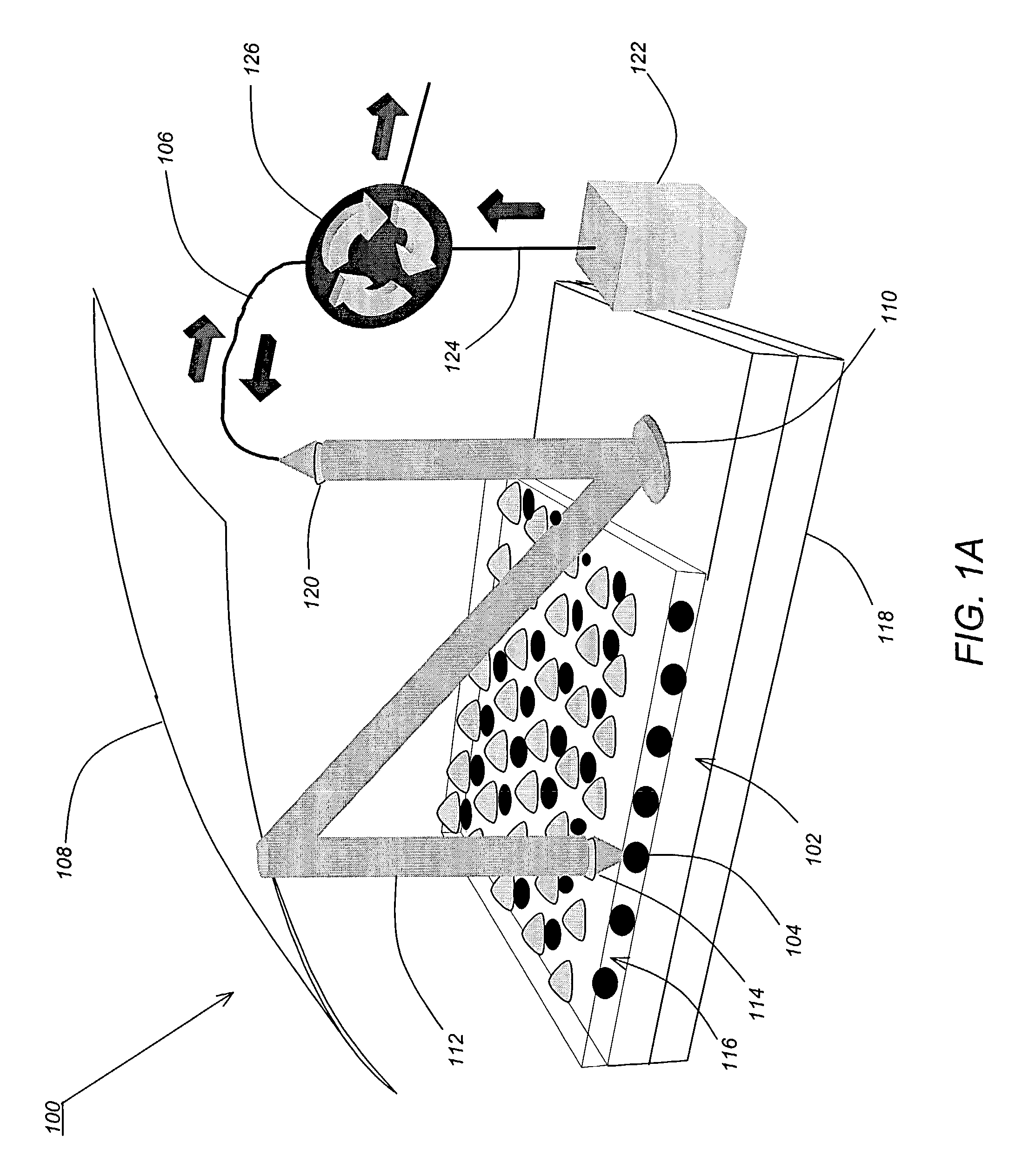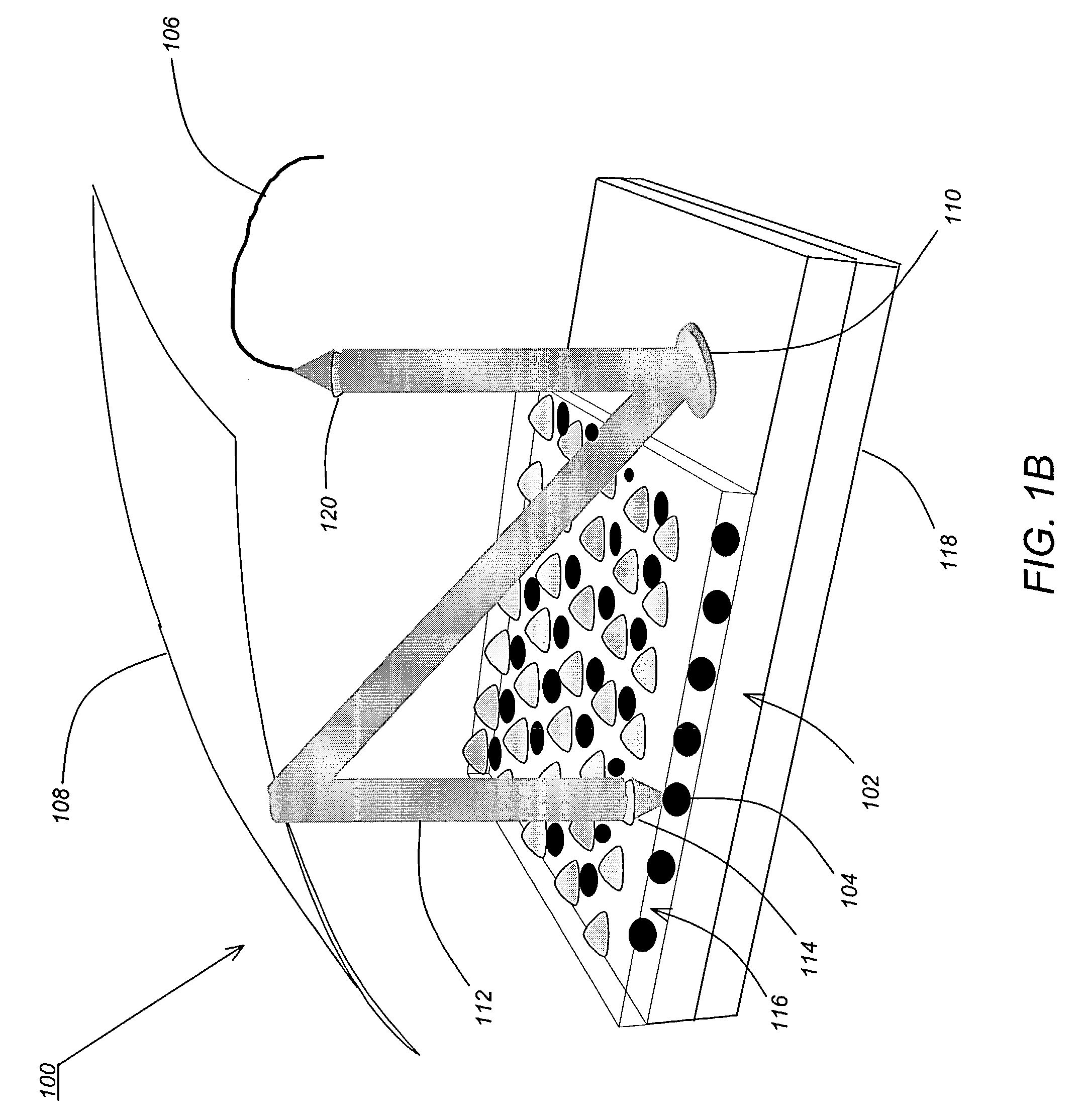Wavelength selectable light source
a light source and selectable technology, applied in the direction of semiconductor laser arrangement, optical resonator shape and construction, semiconductor lasers, etc., can solve the problems of large flat mirror, large optical aberration, large flat mirror, etc., and achieve high power emission and reliability
- Summary
- Abstract
- Description
- Claims
- Application Information
AI Technical Summary
Benefits of technology
Problems solved by technology
Method used
Image
Examples
Embodiment Construction
[0028]In the following description, reference is made to the accompanying drawings which form a part hereof, and which is shown, by way of illustration, an embodiment of the present invention. It is understood that other embodiments may be utilized and structural changes may be made without departing from the scope of the present invention.
[0029]FIGS. 1A and 1B illustrate wavelength selectable light sources according to alternative embodiments of the present invention. FIG. 1A illustrates a first embodiment where the wavelength selectable light source uses optical pumping, and FIG. 1B illustrates a second embodiment where the wavelength selectable light source is implemented without optical pumping.
[0030]As shown in FIGS. 1A and 1B, a wavelength selectable light source 100 of the present invention can be realized using a two-dimensional (2-D) array of variable wavelength light emitters, which in this embodiment comprise vertical-cavity surface-emitting lasers (VCSELs) 102 fabricated...
PUM
 Login to View More
Login to View More Abstract
Description
Claims
Application Information
 Login to View More
Login to View More - R&D
- Intellectual Property
- Life Sciences
- Materials
- Tech Scout
- Unparalleled Data Quality
- Higher Quality Content
- 60% Fewer Hallucinations
Browse by: Latest US Patents, China's latest patents, Technical Efficacy Thesaurus, Application Domain, Technology Topic, Popular Technical Reports.
© 2025 PatSnap. All rights reserved.Legal|Privacy policy|Modern Slavery Act Transparency Statement|Sitemap|About US| Contact US: help@patsnap.com



